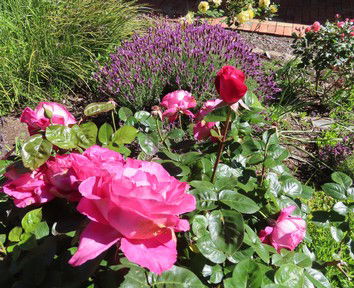Quiz Answer Key and Fun Facts
1. Despite its prickly nature, this is possibly the most beloved flower since ancient times; it comes in most colours, though a truly blue one is still elusive. What is it?
2. This pretty flower has been cultivated since neolithic times, used as both food and as a sedative in rituals. What is it?
3. This lovely lady guards my back door. As she looked a little severe, I planted some "hair" in the top of her head. What is the plant I used?
4. Native to eastern Asia and the Himalayas, this woody plant only flowers for a brief period, but makes up for its brevity with its handsome leaf structure the rest of the year. What is this cold weather charmer?
5. Brightening the dull winters, I have several of this species. This is a new one for me, planted to 'pop' in contrast to my pink varieties. Can you guess the species?
6. Commonly (and incorrectly) called a geranium in Australia, what is the correct name of this flowering plant?
7. I have recently been given one of the plants (pictured) for my newly replanted front garden. In colder climes it is a house plant, but should be happy outside in our temperate climate. What plant is this?
8. A shy shade-lover, this green and white perennial will soon disappear till next winter. It grows from a rhizome, and dies back each summer. What is it?
9. A garden staple, my bees constantly visit this blue herbaceous plant when it's in flower. Grown both for fragrance and flavour, what is it?
10. This small, low-growing herbaceous perennial brightens my border. The flowers form a taller cluster above the rosette of leaves. What is it?
Source: Author
windrush
This quiz was reviewed by FunTrivia editor
agony before going online.
Any errors found in FunTrivia content are routinely corrected through our feedback system.
